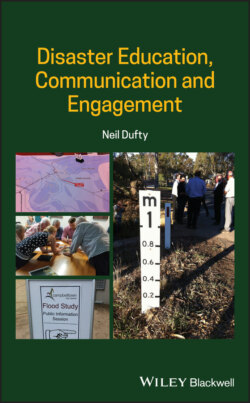Читать книгу Disaster Education, Communication and Engagement - Neil Dufty - Страница 17
2.2.2.1 Early Warning
ОглавлениеThe primary aim of an early warning system is to provide people with enough time to make themselves safe when a threat to them is imminent. A secondary aim is the protection of property. It is also important to try to ensure the safety of companion animals and livestock such as sheep, cattle, and horses.
According to Mileti and Sorensen (1990), ‘a warning system is a means of getting information about an impending emergency, communicating that information to those who need it, and facilitating good decisions and timely response by people in danger’.
Early warning is the bridge between risk and crisis communication. ‘Early warning is not only the production of technically accurate warnings but also a system that requires an understanding of risk and a link between producers and consumers of warning information, with the ultimate goal of triggering action to prevent or mitigate a disaster’ (International Federation of Red Cross and Red Crescent Societies 2009).
Clear, timely, and accurate warning information should be communicated to at-risk communities. The International Federation of Red Cross and Red Crescent Societies (2014a) states that ‘the outputs of an early warning system must recognise the diversity of the audience and be appropriate to that audience. Outputs should be contextualised, granular and specific to potentially impacted localities. They should include clear explanations of degree or severity, of trend, of timing, and of the confidence associated with the prediction. The choice of the language and the medium of the communication should be appropriate to the audience, as should the level of technical complexity.’
An early warning system, where at-risk communities, emergency agencies, and other parties (e.g. the media) share information through two-way communication, helps build trust and ensure appropriate responses as the emergency or disaster event unfolds. ‘A local, “bottom-up” approach to early warning, with the active participation of local communities, enables a multi-dimensional response to problems and needs. In this way, local communities, civic groups and traditional structures can contribute to the reduction of vulnerability and to the strengthening of local capacities’ (International Strategy for Disaster Reduction 2006).
